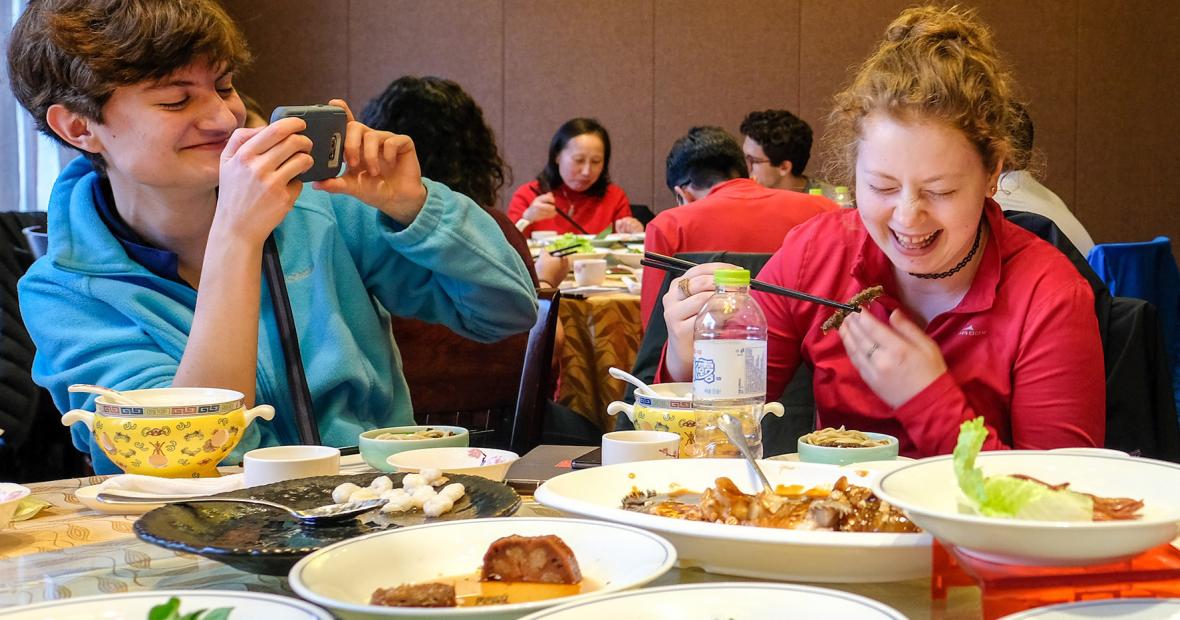Come for the Food — Stay for the Conversation
A Gateway Course that Will Open Your Eyes to East Asia’s Culture and More
You wouldn’t think that a course about food would help you learn critical thinking and writing skills, but you might be surprised. East Asian Studies 195: Food in East Asia strives to do just that.
As a pilot to the gateway seminar for the East Asian Studies concentration at Grinnell, this course is not just about food, though. You will learn about East Asian culture, art history, literature, religious studies, and education. Through this lens, EAS 195 provides a foundation for the East Asian studies concentration, while also helping you develop skills that can be a stepping stone to higher learning. Food provides the perfect foundation for this course; it allows students to embrace its interdisciplinary approach.
Mariko Schimmel, an associate professor of Chinese and Japanese and chair of the East Asian Studies concentration, believes that the course supports Grinnell’s dedication to bring together and value diverse views and voices. “I think the liveliness of the interdisciplinary community at a liberal arts college is on full display in this course. Learning as an interdisciplinary community of scholars (both instructors and students) represents the ethos very well.”
As one of the instructors of the course, Schimmel adds, “We envision that after taking this course, a student may be able to move into various courses of studies with an open mind to other approaches to the same subject.”
Food in East Asia is a team-taught course with two East Asian Studies instructors; it also features guest speakers from within the Department of Chinese and Japanese. This course provides a general background and foundation for East Asian Studies. It also introduces you to other aspects of the concentration. In the call-and-response format of the guest lectures, you will learn how the discussed topics relate to one another. The guest speakers will discuss their specialties, and the co-instructors will add their thoughts to the conversation.
For example, Schimmel says, “When a religious studies professor gave a lecture about temple food tourism in South Korea, the Chinese professor followed up with a discussion of food nostalgia and halal food in China.”
Students of this course sing its praises. An intended science major reported that he appreciated how the course “opened his eyes to the modes of humanistic inquiries.” Many students enjoy the hands-on activities, such as preparing the food of several East Asian locales. Even through the challenges of remote learning, students were able to participate in experiential learning. All in all, Food of East Asia is a course that appeals to learners from many different concentrations and majors.

